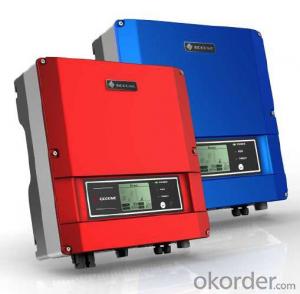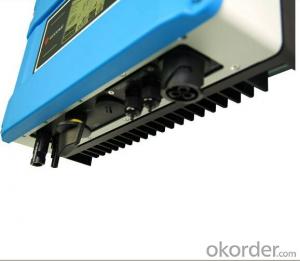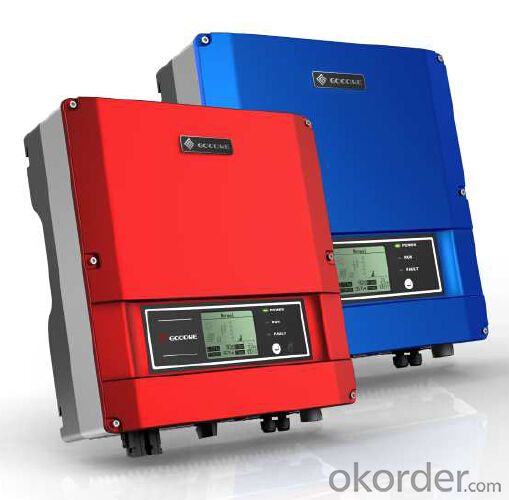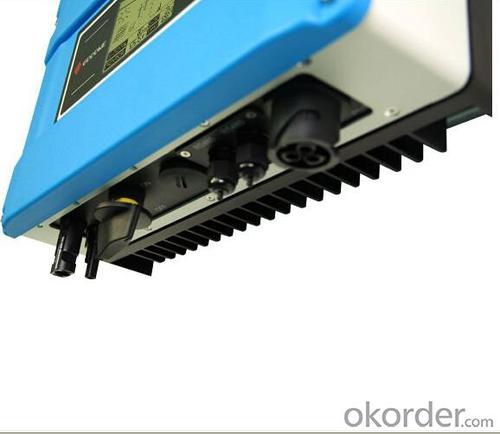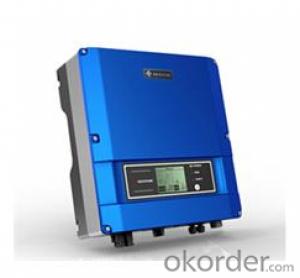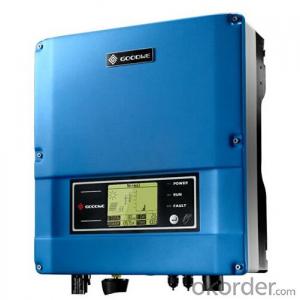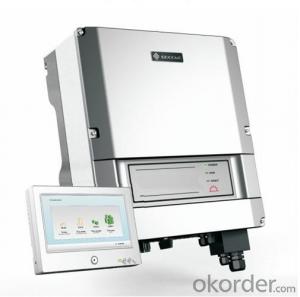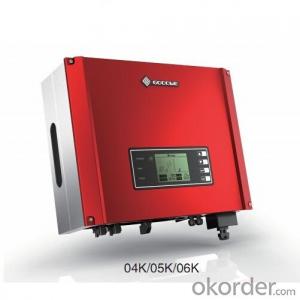House Solar Inverter GW3000-SS On Grid Solar Inverter
OKorder Service Pledge
OKorder Financial Service
You Might Also Like
GW3000-SS photovoltaic inverter is suitable for home rooftop photovoltaic system, designed under modern industrial concept. There are three colors for option with fashionable appearance. This model uses isolation-free design with advanced communication method and extremely high conversion efficiency. The maximum output power is 3000W. To ensure its stability and long service life, our inverter is manufactured with optimum quality components. It holds a safe lead among similar products.
Datasheet
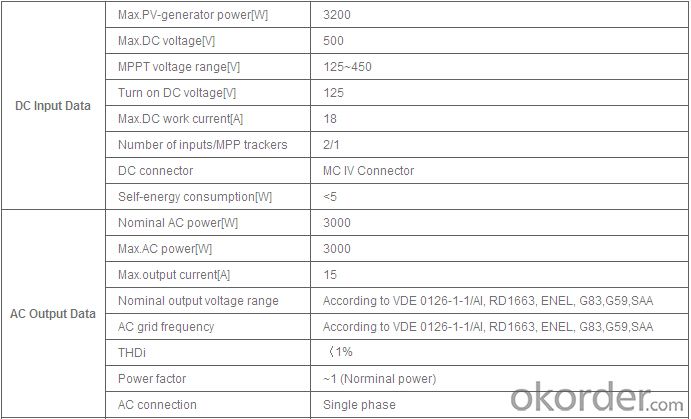
- Q: How does a solar inverter handle voltage regulation in the grid?
- A solar inverter handles voltage regulation in the grid by constantly monitoring the voltage levels and adjusting its output accordingly. If the grid voltage is too high, the inverter reduces its output to prevent overloading and potential damage to connected devices. Conversely, if the grid voltage is too low, the inverter increases its output to compensate for the deficit and maintain a stable voltage supply. This regulation ensures that the solar energy generated by the inverter is seamlessly integrated into the grid while adhering to grid voltage standards.
- Q: What is the role of a solar inverter in voltage support?
- The role of a solar inverter in voltage support is to convert the direct current (DC) generated by solar panels into alternating current (AC) that is compatible with the electrical grid. Additionally, it helps regulate the voltage levels to ensure a steady and consistent supply of electricity to the grid, thereby supporting voltage stability.
- Q: How does the weight of a solar inverter affect its installation process?
- The weight of a solar inverter can affect its installation process in a few ways. Firstly, a heavier inverter may require additional structural support or mounting equipment to ensure it is securely installed. This could involve reinforcing the mounting surface or using specialized brackets or racks. Secondly, the weight of the inverter may impact the ease of handling and maneuvering during installation, especially if it needs to be installed in elevated or hard-to-reach areas. Lastly, the weight can also impact the overall logistics of the installation, including transportation, lifting, and positioning of the inverter.
- Q: What is the role of a solar inverter in a solar power system?
- The role of a solar inverter in a solar power system is to convert the direct current (DC) electricity generated by the solar panels into alternating current (AC) electricity that can be used to power appliances and devices in homes or businesses. It also regulates and optimizes the flow of electricity to ensure maximum efficiency and safety in the solar power system.
- Q: What is the role of a transformer in a solar inverter?
- The role of a transformer in a solar inverter is to convert the direct current (DC) power generated by the solar panels into alternating current (AC) power that can be used by household appliances and fed into the electrical grid. The transformer steps up or steps down the voltage as necessary to ensure efficient power transmission and distribution. Additionally, it provides electrical isolation and protection from voltage fluctuations, ensuring the safe and reliable operation of the solar inverter.
- Q: What are the potential risks of overcharging a battery connected to a solar inverter?
- Overcharging a battery connected to a solar inverter can lead to several potential risks. One of the primary risks is a reduced lifespan of the battery. Overcharging can cause excessive heat and stress on the battery, leading to a shorter overall lifespan and reduced capacity over time. Another risk is the potential for thermal runaway or battery failure. Overcharging can cause the battery to become unstable, leading to a build-up of gases and potential leakage or explosion. Furthermore, overcharging can also result in increased maintenance costs. The battery may require frequent monitoring and maintenance to prevent overcharging, which can be time-consuming and costly. Lastly, overcharging can lead to inefficient energy storage. When a battery is overcharged, excess energy is wasted, reducing the overall efficiency of the solar energy system. To mitigate these risks, it is crucial to properly size and configure the solar inverter and battery system, ensuring that the battery is not subjected to excessive charging currents. Using appropriate charge controllers and monitoring systems can also help prevent overcharging and protect the battery from potential risks.
- Q: Can a solar inverter be used in low light conditions?
- Yes, solar inverters can still be used in low light conditions. However, the efficiency of the solar inverter may be reduced as it relies on sunlight to convert solar energy into usable electricity.
- Q: What is the role of ground fault protection in a solar inverter?
- The role of ground fault protection in a solar inverter is to safeguard against electrical faults that occur when an unintended ground connection is made in the system. It detects any leakage of current to the ground and quickly disconnects the circuit to prevent the risk of electric shock or damage to the equipment. Ground fault protection ensures the safety and reliability of the solar inverter, as well as the overall solar power system.
- Q: Can a solar inverter be used with a solar-powered food dehydrator?
- Yes, a solar inverter can be used with a solar-powered food dehydrator. A solar inverter is responsible for converting the direct current (DC) generated by solar panels into alternating current (AC) that is suitable for powering household appliances. Since a food dehydrator operates on AC power, using a solar inverter allows the solar energy captured by the panels to be utilized effectively in powering the dehydrator.
- Q: Can a solar inverter be used in areas with limited roof space or installation options?
- Indeed, areas with limited roof space or installation options can still make use of a solar inverter. Typically, solar inverters are compact, enabling installation in diverse locations like the ground, walls, or even indoors. Moreover, there are various types of solar inverters accessible, such as microinverters and power optimizers, which offer greater flexibility in system design and installation. By utilizing these alternatives, available space can be maximized, and more installation options can be provided for areas with restricted roof space.
Send your message to us
House Solar Inverter GW3000-SS On Grid Solar Inverter
OKorder Service Pledge
OKorder Financial Service
Similar products
Hot products
Hot Searches
Related keywords

